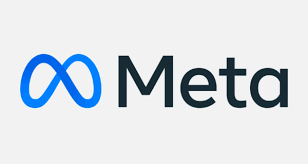Staying consistent with Facebook content is important for visibility and engagement. Learning how to schedule Facebook posts on mobile helps page managers plan ahead and maintain steady communication, especially when using a phone or tablet is more convenient.
Understanding Facebook’s Mobile Scheduling Tools
Meta Business Suite Mobile App
The most common tool for scheduling Facebook posts from a mobile device is the Meta Business Suite app. It’s free and designed specifically for business page managers.

How to Get Started:
- Download Meta Business Suite on your mobile
- Log in using your Facebook account
- Choose the business page you manage
Step-by-Step: How to Schedule Facebook Posts on Mobile Using Meta Business Suite
- Tap the “Posts & Stories” option
- Select “Create Post”
- Add your image, caption, and links
- Tap “Schedule for Later”
- Choose the date and time
- Confirm the schedule
Following this simple routine allows users to manage posting times even during non-business hours.
Alternatives to Meta Business Suite
While Meta’s app is most reliable, others like Buffer, Hootsuite, and Later also offer mobile scheduling. Some require payment for advanced features.
How to Schedule Facebook Posts on Mobile Using Third-Party Apps
- Download the preferred app (e.g., Buffer)
- Connect your Facebook page
- Choose “New Post” or equivalent
- Enter content, choose media
- Select “Schedule,” then set time/date
- Tap “Confirm”
Be sure to verify that permissions and integrations are correct. Facebook’s policies sometimes change, which can impact access.
Tips to Improve Scheduling Strategy
Know Your Audience’s Peak Time Use insights to determine when your followers are active. This can increase engagement.
Plan Weekly or Monthly Content Use a calendar format to plan topics, campaigns, and product promotions.
Use Visuals Include videos, product images, or infographics in your scheduled posts.
Write Short Captions On mobile, clarity is key. A concise caption works best for Facebook posts.
How to Schedule Facebook Posts on Mobile Without a Business Page
Personal profiles have limited scheduling features. One workaround is using drafts or reminders. Business pages offer better tools for scheduled posts.
How Often Should You Schedule Facebook Posts on Mobile?
Aim to post 3 to 5 times per week. Daily posts can keep your page visible but avoid overwhelming your followers. Use analytics to adjust frequency.

How to Edit Scheduled Facebook Posts on Mobile
From the Meta Business Suite:
- Tap “Scheduled Posts”
- Choose the post to edit
- Make changes
- Tap “Save” or “Reschedule”
This flexibility helps refine your message if something changes before the post goes live.
Best Practices for Scheduling Facebook Posts on Mobile
- Test post timing weekly
- Use carousel or video posts
- Avoid over-promotional content
- Balance between educational, entertaining, and promotional content
- Respond to comments and DMs after posts go live
Common Mistakes to Avoid When Scheduling
- Forgetting to check time zone settings
- Ignoring mobile layout previews
- Scheduling duplicate content
- Missing image sizing guidelines
Creating a Weekly Post Plan
Monday: Educational tip
Tuesday: Behind-the-scenes photo
Wednesday: Product spotlight
Thursday: Customer testimonial
Friday: Facebook Reel or short video
Saturday: Promotion or discount
Sunday: Personal message or story
How to Use Facebook Reels and Stories in Scheduling
Stories cannot be scheduled from mobile yet, but Reels can be prepared using mobile apps and uploaded manually. Some tools like Buffer support this partially.
Do You Need a Computer to Schedule Posts?
No. Once you know how to schedule Facebook posts on mobile, you can manage nearly every aspect from a phone. Computers provide bigger screen space, but they’re not required.
FAQs About How to Schedule Facebook Posts on Mobile
Can I schedule Facebook posts from my phone without an app? No. The Facebook app doesn’t support scheduling directly. You’ll need Meta Business Suite or a third-party scheduler.
Is Meta Business Suite free? Yes. It’s free for all Facebook page managers.
Can I schedule posts for groups from mobile? Some group types allow it through Meta Business Suite, but features are limited.
Can I edit or delete scheduled posts? Yes. You can modify or remove scheduled posts anytime before they go live.
Do scheduled posts affect reach? Not directly. What affects reach is content quality, timing, and engagement.
Final Thoughts
Mastering how to schedule Facebook posts on mobile helps small businesses, marketers, and creators stay organized and active. It saves time and ensures your audience hears from you regularly.
Conclusion
Understanding how to schedule Facebook posts on mobile gives business owners, social media managers, and creators the flexibility to maintain a consistent presence without being tied to a desktop. Mobile scheduling is not just a convenience—it’s a practical tool for managing content in real time, responding to audience behavior, and keeping up with daily publishing goals.
Using tools like the Meta Business Suite or third-party scheduling apps, you can prepare content in advance and ensure that it goes live at the optimal time. This means you’re free to focus on other parts of your business while your Facebook content works in the background. It also reduces the stress of last-minute posting and helps keep your messaging aligned with broader marketing goals.
For small businesses, being able to schedule Facebook posts on mobile ensures that your page stays active and visible, even if you’re away from a computer. This is particularly useful for salons, retail shops, food businesses, or service providers who are often on the go but still want to engage their community.
Regular posting is key to growing reach and engagement on Facebook. Scheduling helps you stay consistent, test different content formats, and avoid gaps in your content calendar. Just remember to check in regularly to respond to comments and adjust your strategy as needed.
In short, learning how to schedule Facebook posts on mobile makes social media more manageable. With the right tools and planning, it allows for better consistency, stronger engagement, and time-saving workflows that support long-term growth.

